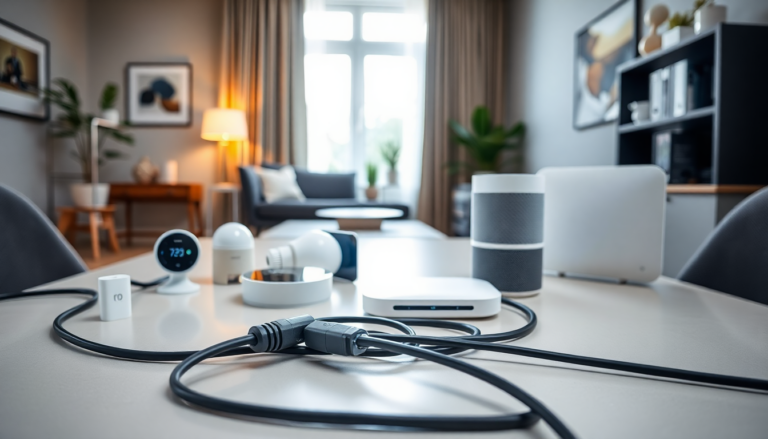Argomenti trattati
In the ever-changing world of smart home technology, it’s easy to get swept up in the excitement of wireless solutions. But here’s a thought: are we overlooking the essential role that traditional wired ethernet connections play in maximizing performance? Understanding how ethernet can enhance your smart home setup is key to ensuring both reliability and efficiency in your tech environment.
The Importance of Wired Connections in Smart Homes
When we talk about smart home setups, wireless technologies like Wi-Fi, Zigbee, and Bluetooth usually steal the spotlight. However, we shouldn’t underestimate the value of wired ethernet connections. Devices such as the Philips Hue Bridge and Apple TV streaming boxes thrive on ethernet connections, which significantly boost their performance and stability. Think about it: for high-demand applications like gaming consoles, where every millisecond counts, a wired connection can make all the difference in user experience.
But what really sets ethernet apart? For starters, it offers faster data transmission and helps reduce interference—something that often plagues wireless networks. This is particularly important in homes bustling with multiple devices fighting for bandwidth. As our smart homes grow more complex and interconnected, the need for solid networking solutions becomes crystal clear. Ethernet serves as a dependable backbone, supporting a multitude of smart devices operating simultaneously.
Choosing the Right Ethernet Equipment
So, how do you effectively integrate ethernet into your smart home? It all begins with investing in the right equipment. An unmanaged 5-port gigabit switch from TP-Link, for example, is a practical solution for expanding your network. With several ports at your disposal, these switches allow you to connect multiple devices without the hassle of constantly swapping cables or running out of connections.
Picture this: having a dedicated ethernet switch tucked away under your desk can seamlessly connect your PC, smart lighting systems, and media players, ensuring everything runs smoothly. You might also consider placing additional switches in strategic locations around your home—like behind your television or in an office cabinet—to streamline the connectivity of devices such as gaming consoles, streaming boxes, and smart hubs. This not only eases the load on your main router but also enhances the overall stability of your smart home network.
Best Practices for Setting Up Ethernet in Your Home
Setting up ethernet connections isn’t as daunting as it may seem. Unmanaged switches are designed to be user-friendly, requiring little to no configuration. Just connect the link port of the switch to your router or mesh hub, and plug in your devices. This daisy-chaining capability allows for easy scalability—you can add more switches as needed without sacrificing performance.
And don’t forget about organization! Using an AC adapter for power will keep your switches operational while reducing clutter. Regularly assessing your network needs and upgrading your equipment will help maintain optimal performance. As your smart home evolves, so too should your networking capabilities, enabling you to stay ahead of the technology curve.
Conclusion and Future Outlook
The significance of ethernet connections in smart homes is more critical than ever. As technology continues to advance and the number of smart devices in our homes proliferates, ensuring they are reliably connected through wired solutions will enhance their functionality and overall user experience. Looking to the future, robust networking solutions like ethernet will be vital as we continue integrating more smart devices into our everyday lives.

